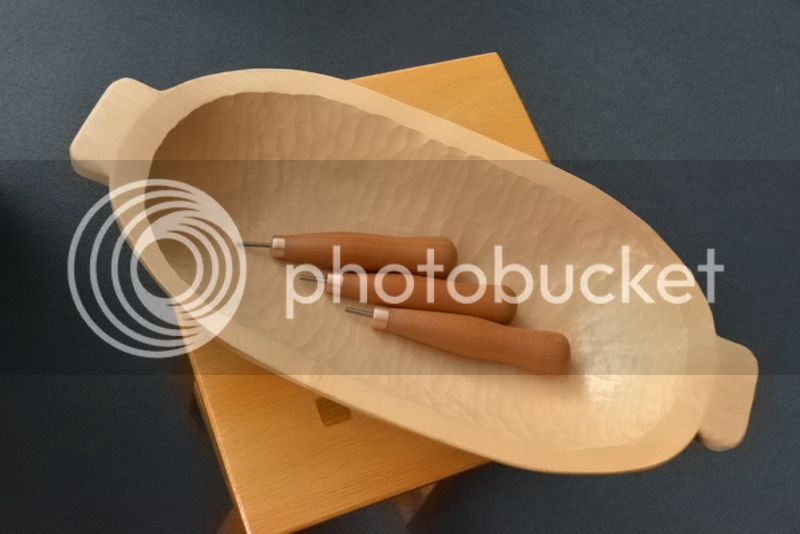Sheffield Tony
Ghost of the disenchanted
I put this together for another forum, but thought it might be of interest.
Having acquired a suitable ash log the other weekend, I figure it is time to have a go at making a chair. The design I'm aiming for is a Philip Clissett style spindle back. But I'm going to vary it a bit by replacing the wood board seat with a woven seagrass one; this might not be traditional but it will better match my stool.
I want to do without power tools, and no sanding - the shaved or lathe turned finish should be good enough without.
So, to start:

This is half an ash trunk, about 5 foot long. Spiltting again with metal wedges:

This is repeated again to spilt into 1/8ths, to get the two back legs, which are then shaped by axe and on the shave horse (it had started to rain, so moved indoors !)

Here I've been using a French drawkinfe, and a scrap of plywood with a 1 3/4" hole drilled in it as a gauge - when it slides along the leg, it is the right size.
Having got the long bits, and stashed them in a plastic sack to keep them green, now the spindles for the spindle back. Roughed out by axe, and just starting to knock the corners off on the lathe - again indoors using the bungee instead of a pole.

Number one of four completed:

Having acquired a suitable ash log the other weekend, I figure it is time to have a go at making a chair. The design I'm aiming for is a Philip Clissett style spindle back. But I'm going to vary it a bit by replacing the wood board seat with a woven seagrass one; this might not be traditional but it will better match my stool.
I want to do without power tools, and no sanding - the shaved or lathe turned finish should be good enough without.
So, to start:

This is half an ash trunk, about 5 foot long. Spiltting again with metal wedges:

This is repeated again to spilt into 1/8ths, to get the two back legs, which are then shaped by axe and on the shave horse (it had started to rain, so moved indoors !)

Here I've been using a French drawkinfe, and a scrap of plywood with a 1 3/4" hole drilled in it as a gauge - when it slides along the leg, it is the right size.
Having got the long bits, and stashed them in a plastic sack to keep them green, now the spindles for the spindle back. Roughed out by axe, and just starting to knock the corners off on the lathe - again indoors using the bungee instead of a pole.

Number one of four completed:



















































